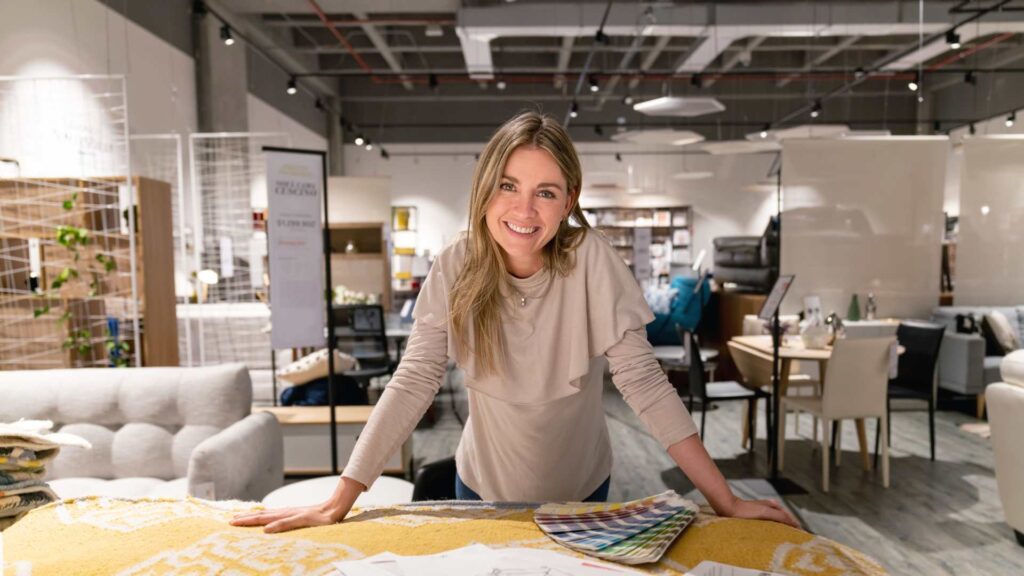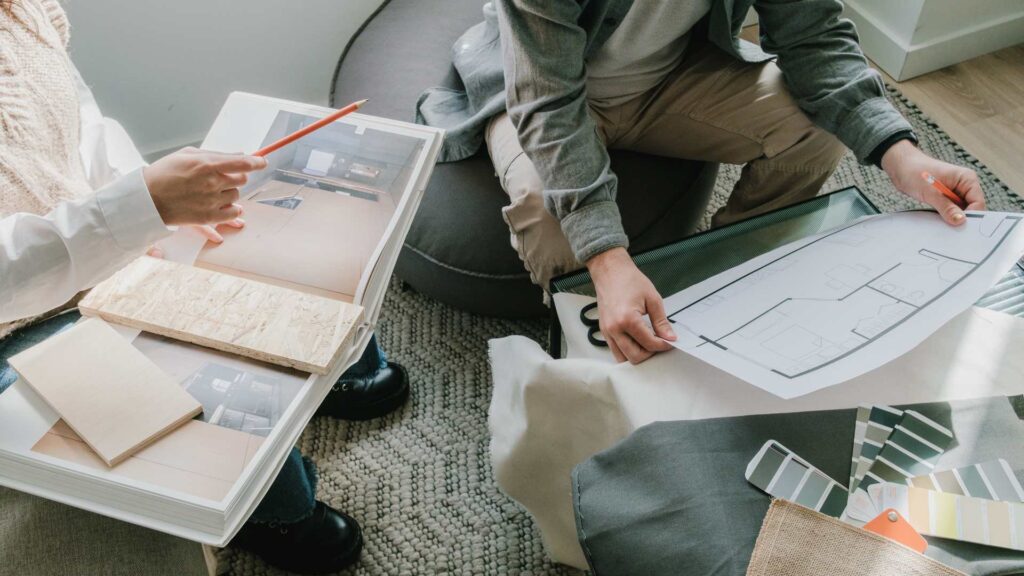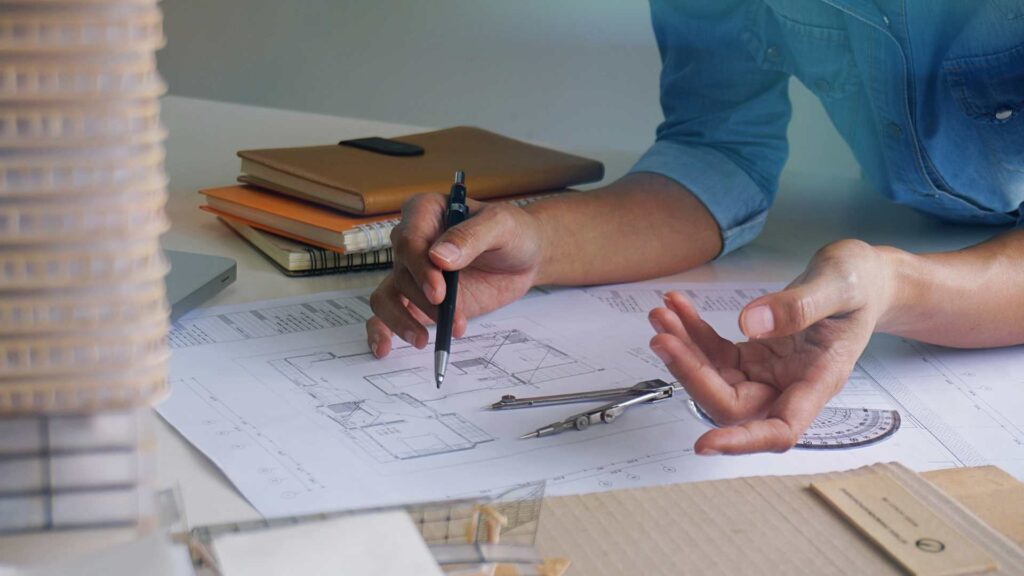According to a study, the Indian interior design industry is assumed to experience a growth rate of 8.7%!
Interior design goes beyond the placement of furniture and the selection of colour schemes; it is about designing space that has the use, functionality, and character of the users. If you have a flare for design and are planning on pursuing a lucrative career in design that involves actual skills in design then this is the best profession for you.
In this blog, we will guide you on how to become an interior designer in 2024. By the end of this blog, you will have a more straightforward guide on this topic. This guide will lead you step-by-step through the basic provisions on how to become an interior designer, what education and certification you need, and how to build a portfolio and find clients.
We will also answer some of the common questions to make it easier for you to follow this promising career.
Who is an Interior Designer?

An interior designer is a creative professional who combines artistic flair with technical expertise to enhance and transform the interior spaces of homes, offices, or commercial establishments. They are responsible for creating functional, safe, and aesthetically pleasing indoor spaces. Interior designers strategically plan space utilization, selecting colour schemas and lighting fixtures to create a great ambience in different settings.
Interior Designer Key Responsibilities
To learn how to become a professional interior designer, first, you should familiarize yourself with the significant duties attached to the role. Interior designers are responsible for creating and enhancing the visual appeal of interior spaces. They undertake several responsibilities to achieve this objective.

Some of the critical responsibilities of interior designers are as follows:
1) Conceptualize and execute designs that reflect the client’s preferences.
2) Assess space requirements to prepare designs and layouts
3) Select elements like colour schemes, lighting options, and materials according to the designs.
4) Optimize functionality, aesthetics, and spatial harmony within the given space
5) Collaborate with designers, architects, constructors, and decorators to enhance the overall design and interiors of a space
6) Stay updated with the latest developments, evolutions, and best practices in the industry to implement these in designs.
Suggested read – How to start tiffin service from home
6 Steps on How to become an Interior designer
1) Understanding the role of an interior designer

This is what you should know before you can explore how to become an interior designer with attention to detail. Interior designers use their profession to take up the challenge of influencing building interiors to put them in better shape health-wise and more presentable. This involves:
- Space Planning: Creating environment plans that enhance usability and movement.
- Colour and Material Selection: Selecting the appropriate colours, materials, and finishes that best suit the client’s needs.
- Furniture and Decor: Any decisions made about furniture and decoration of walls and floor, among others.
- Lighting Design: Designing good lighting schemes that are appropriate for the area of the building.
- Project Management: Supervising implementation of design plans in terms of approving and scheduling, as well as budgeting and arranging of contractors and subcontractors.
2) Educational pathways
- Formal Education: Most interior designers are required to have a certain level of educational requirement; most interior designers hold a bachelor’s degree in interior design, architecture, or any related field. Courses usually include such subjects as design fundamentals, colour coordination, space organization, and the use of CAD equipment. The accredited program ensures that the knowledge imparted is well-informed of industry requirements.
- Consider Advanced Degrees: Although not always essential, it can offer more specialized knowledge or a focus, for instance, on sustainability or the restoration of historic buildings. It also creates a platform for being offered teaching jobs or higher positions in design companies.
- Certification and Licensure: In most of the areas it is necessary to pass certification. In the USA NCIDQ (National Council for Interior Design Qualification) is well accepted for instance. One has to pass a Computer Adaptive Test or CAT and also show past work experience.
- Check Local Requirements: Rules and regulations therein may differ from one state to the other as well as from country to country. Particular jurisdictions call for certain licenses to practice as an interior designer. It is, therefore, important to check on your state laws and ensure that you do not breach any laws.
3) Building practical skills

- Create a Diverse Portfolio: Another thing that should be well represented in your portfolio is the variety of projects; some of the projects you should show are from the residential area and others from the commercial area. Use samples of the cases, specifications, descriptions, and illustrations of the results in the form of photographs and videos, as well as the responses and recommendations of the clients.
- Work on Real Projects: Get affiliated working experience by joining internships, apprenticeships, and freelance job offers. Working experience is always valuable and allows me to create a portfolio that will be exceptional.
- Master Design Software: Designing software such as AutoCAD, Sketch Up, and Revit are useful when preparing detailed design renders.
- Use Design Tools: Get to know such tools as Adobe Photoshop for creating mood boards and presenting them.
4) Networking and professional development

- Join professional organizations: Most states have chapters of such professional associations as the American Society of Interior Designers (ASID) or the International Interior Design Association (IIDA). It states that membership provides a platform for networking and exchange of ideas with other members, admission to exclusive events, and training programs.
- Attend Design Shows and Conferences: Be informed about industry topics and developments, meet new friends, and get inspiration by joining design shows and conventions.
- Find a Mentor: Networking with interior designers who have worked for some years will assist you in gaining advice, evaluating your performance, and expect to be well-directed.
- Participate in Workshops and Seminars: Continually visit workshops and seminars to be aware of the current trends, processes, and equipment in design.
5) Starting a career

- Create a Strong Online Presence: Get a sleek, clean corporate business website development service from a business website development company where clients can view your works and services and learn how to reach you. Promote your work on social media sites to reach out to prospective customers. Take help from a reputed digital marketing agency.
- Market Yourself: Spend time advertising your services in the market through participation in trade fairs, newspaper and magazine adverts, and primarily by word of mouth.
- Find Personal Connections: Send an e-mail to all your friends, relatives, and anyone you know who may require the services of a designer or someone who does.
- Partner with Real Estate Agents and Builders: Remain in touch with persons who may refer you to their employers in the future.
6) Managing Your Business

- Set Up Your Business: Choose if you want to be a self-employed designer, start your own company, or go with a recognized company. Know the business end, contracts, insurance, and clients.
- Manage Finances: Record the expenses, strategize on the prices to offer, and deal with the invoices as per the category of customers to be served. It will be advisable to look for the services of an accountant or to invest in a good accounting software program.
- Stay Educated: It is common to observe new design trends and technologies in the course of a given amount of time, thus always strive to learn and develop in one’s career.
- Seek Feedback: Always seek opinions from clients, especially when providing services that enable you to enhance your competency.
Soft skills required for interior designer
1. Attention to Detail
Another area of differentiating that is valuable for an interior designer is great attention to detail. This implies paying much attention and analyzing some of the features like texture, colour, and layout to ensure that there is beauty and functionality in the design. It is worth mentioning that such a level of precision is possible if a person is an excellent interior designer.
2. Communication Skills
Interior designers should be good communicators since they work with very many people during a project, such as vendors, contractors, stagists, and brokers, among others. There is a need to demonstrate good communication so that everyone is informed on the progress of the work being done.
3. Creativity
Interior design needs flair as a profession in some ways. It can be considered innate for most designers and is only enhanced throughout their practice. This skill is very important in this type of work since it enables designers to look at an empty land and see beauty in it.
4. Critical Thinking
This is especially useful to interior designers since they have to solve problems and think of new ideas each time they wish to convince clients of what they are selling. They are obliged to analyze various issues objectively and relate to such challenges as the lack of proper management during the construction or renovation, sometimes during the flipping of these places, or even in case they have to design new spaces.
5. Collaboration
Another potential threat is the one that is correlated to the nature of cooperating with multiple other people, including the clients, the vendors, and the other interior decorators. That is why collaboration skills help them to meet deadlines adequately. All the concerned parties can convey the status or modifications comprehensively, and the whole team may back up any risks. Since there are many components in one project, they all are to work towards a common objective, and this requires to be team players.
Suggested read – How to Start a Cafe in India
Conclusion
To become an interior designer, one has to have a formal education, proper license, work experience, and connections. Thus, by following these steps and by never ceasing to improve oneself as a professional, one can indeed create a great career in this exciting and fulfilling field. Regardless of whether one is interested in working on residential, commercial, or specific sectors of interior design, it provides one with the ability to improve the effects that environments create to have an impression on people’s lives.
Let me remind you that it is not an easy path to become an interior designer, but it is a very rewarding one. Design is an unending learning process; therefore, be passionate about the process and continue polishing your talent. The interior design world is still expecting you to give it the unique look you have within you.
FAQs
1. Do I require a degree in Interior design?
However, the possession of a degree in interior design or even any related field may not be obligatory, but it is advisable. Some employees and customers go for designers who have an academic background as it sets a firm ground for designers to work from. Also, certification and licensure can be prerequisites to having a degree.
2. What are the certifications required for interior designing?
In the United States, the NCIDQ certification is one of the prominent certifications for Interior Designers. It shows a considerable level of specialization and may be mandatory for practice in some of the jurisdictions. Other certifications may be LEED accreditation for sustainability design or specific manufacturing certifications.
3. What is the duration of an interior design program?
To become an interior designer usually takes about four years if you choose to get a bachelor’s degree and then the duration of time it will take to get a job and be certified. Altogether, it takes 5-7 years to complete; nonetheless, the period can change depending on the training course and career specification.
4. Is it possible to be an interior designer without a degree?
One can pursue the same without an interior design degree and acquire adequate experience, portfolios, and certification. Nevertheless, a degree generally gives broader knowledge and can be beneficial when applying for a job in a very sparing world.
5. What does an interior designer need to be up to par?
Some of the skills relevant to the role of an interior designer are imagination, good coordination skills, visualization skills, communication skills, and problem-solving skills. Knowledge of particular applications used for designing and the basic principles and tendencies in design are also essential.

